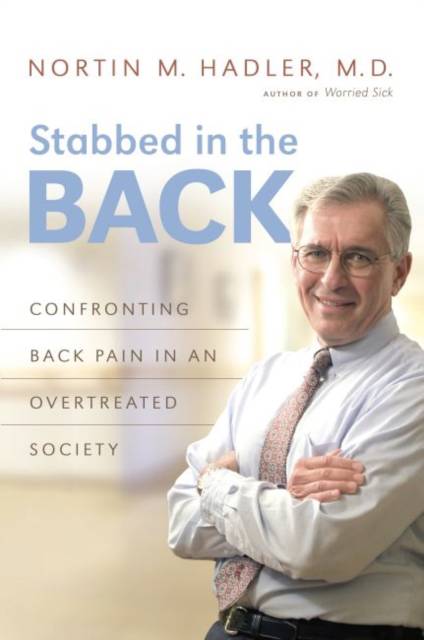
- Afhalen na 1 uur in een winkel met voorraad
- Gratis thuislevering in België vanaf € 30
- Ruim aanbod met 7 miljoen producten
- Afhalen na 1 uur in een winkel met voorraad
- Gratis thuislevering in België vanaf € 30
- Ruim aanbod met 7 miljoen producten
Stabbed in the Back
Confronting Back Pain in an Overtreated Society
Nortin M HadlerOmschrijving
Nortin M. Hadler knows backaches. For more than three decades as a physician and medical researcher, he has studied the experience of low back pain in people who are otherwise healthy. Hadler terms the low back pain that everyone suffers at one time or another "regional back pain." In this book, he addresses the history and treatment of the ailment with the healthy skepticism that has become his trademark, taking the "Hadlerian" approach to backaches and the backache treatment industry in order to separate the helpful from the hype.
Basing his critique on an analysis of the most current medical literature as well as his clinical experience, Hadler argues that regional back pain is overly medicalized by doctors, surgeons, and alternative therapists who purvey various treatment regimens. Furthermore, he observes, the design of workers' compensation, disability insurance, and other "health" schemes actually thwarts getting well. For the past half century, says Hadler, back pain and back pain-related disability have exacted a huge toll, in terms of pain, suffering, and financial cost. Stabbed in the Back addresses this issue at multiple levels: as a human predicament, a profound social problem, a medical question, and a vexing public policy challenge. Ultimately, Hadler's insights illustrate how the state of the science can and should inform the art and practice of medicine as well as public policy. Stabbed in the Back will arm any reader with the insights necessary to make informed decisions when confronting the next episode of low back pain.
Specificaties
Betrokkenen
- Auteur(s):
- Uitgeverij:
Inhoud
- Aantal bladzijden:
- 224
- Taal:
- Engels
Eigenschappen
- Productcode (EAN):
- 9781469642253
- Verschijningsdatum:
- 1/02/2018
- Uitvoering:
- Paperback
- Formaat:
- Trade paperback (VS)
- Afmetingen:
- 178 mm x 231 mm
- Gewicht:
- 326 g

Alleen bij Standaard Boekhandel
Beoordelingen
We publiceren alleen reviews die voldoen aan de voorwaarden voor reviews. Bekijk onze voorwaarden voor reviews.








